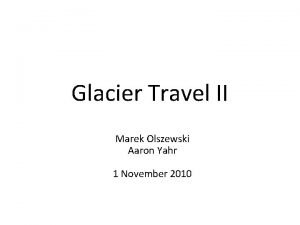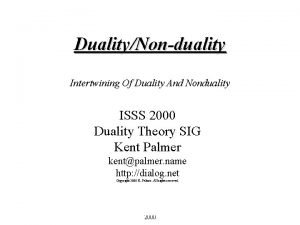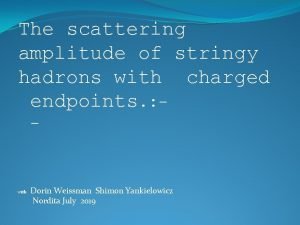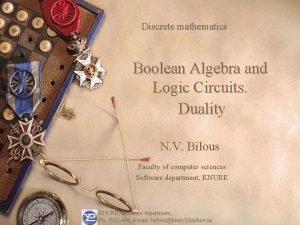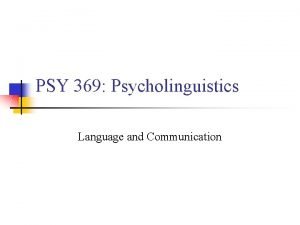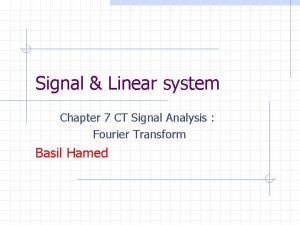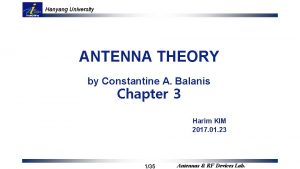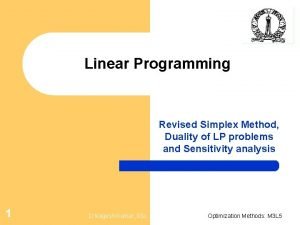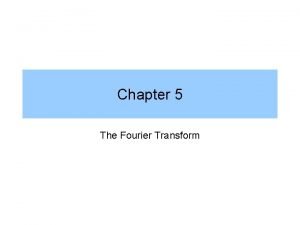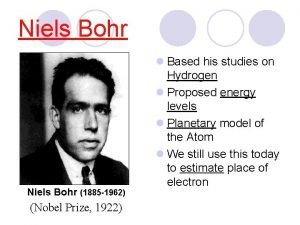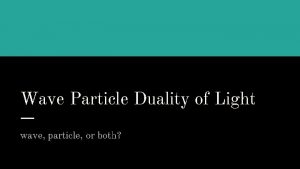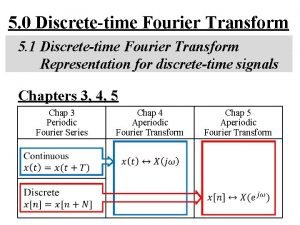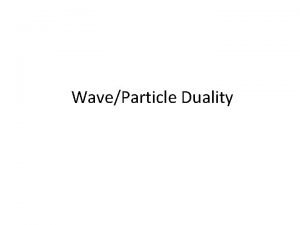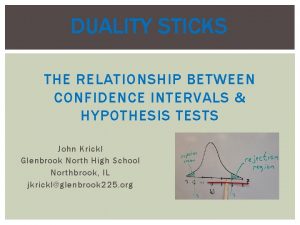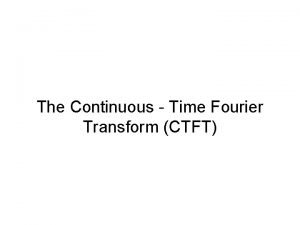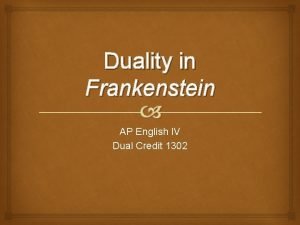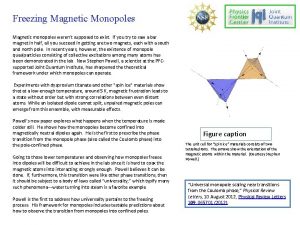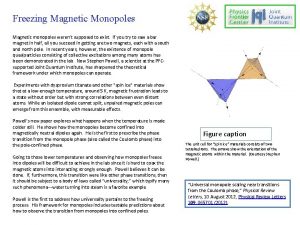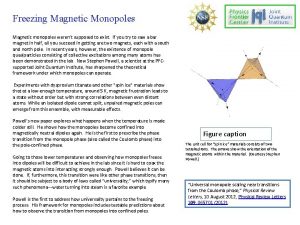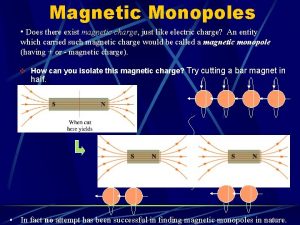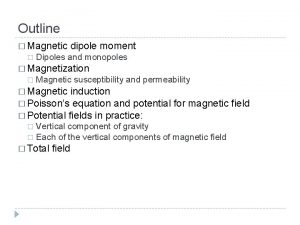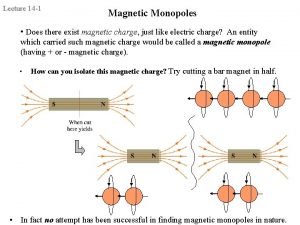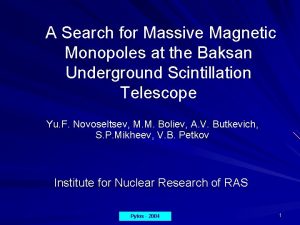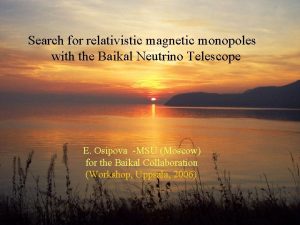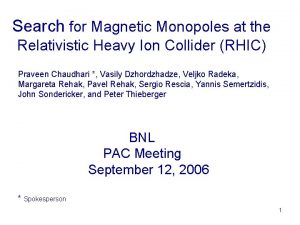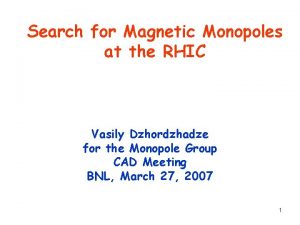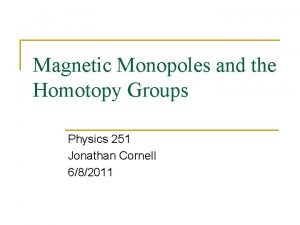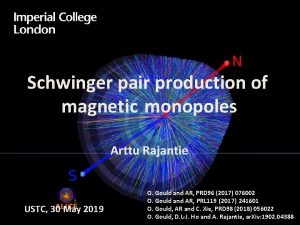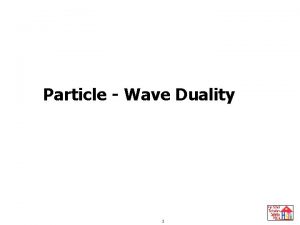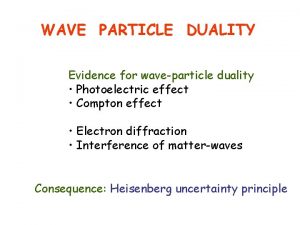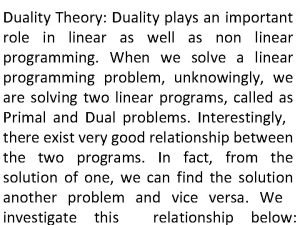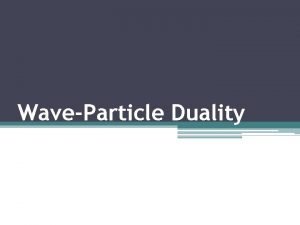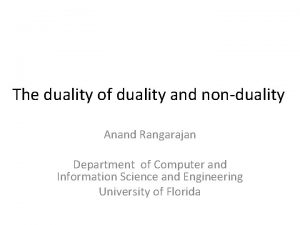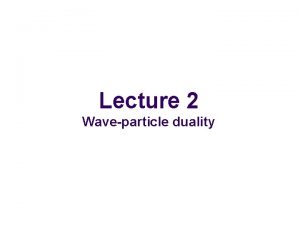Magnetic Monopoles E A Olszewski Outline I Duality





























- Slides: 29


Magnetic Monopoles E. A. Olszewski

Outline I. Duality (Bosonization) II. The Maxwell Equations III. The Dirac Monopole (Wu-Yang) IV. Mathematics Primer V. The t’Hooft/Polyakov and BPS Monopoles a. Gauge groups SU(2) and SO(3) b. Gauge groups SU(N) and G 2

Outline (continued) VI. Montonen-Olive Conjecture (weak/strong duality) and SL(2, Z) VII. Montonen-Olive Duality and Type IIB Superstring Theory

Duality (Bosonization) n The sine-Gordon equation n The Thirring model Meson states → fermion-anti fermion bound states Soliton → fundamental fermion

The Maxwell Equations

The Maxwell Equations (continued)

The Maxwell Equations (continued)

The Maxwell Equations (continued) § Coupling electromagnetism to quantum mechanics

The Maxwell Equations (continued) § Aharonov-Bohm effect

The Dirac Monopole (Wu-Yang)

Dirac Monopole (continued) 1. The existence of a single magnetic charge requires that electric charge is quantized. 2. The quantities exp(-iec) are elements of a U(1) group of gauge transformations. If electric charge is quantized, then c=0 and c=2 p/e 1 (where e 1 is the unit of charge) yield the same gauge transformation, i. e. the range of c is compact. In this case the gauge group is called U(1). In the alternative case when charge is not quantized and the range of c is not compact the gauge group is called R. 3. Mathematically, we have constructed a non-trivial principal fiber bundle with base manifold S 2 and fiber U(1).

Mathematics Primer Magnetic monopole bundle

The t’Hooft/Polyakov and BPS Monopoles The Maxwell Equations (Minkowski space)

The t’Hooft/Polyakov and BPS Monopoles (continued) The Maxwell Equations (continued)

The t’Hooft/Polyakov and BPS Monopoles (continued) Gauge groups SU(2) and SO(3)

The t’Hooft/Polyakov and BPS Monopoles (continued) Monopole construction

The t’Hooft/Polyakov and BPS Monopoles (continued) The potential V(F) is chosen so that vacuum expectation value of F is non-zero, e. g.

The t’Hooft/Polyakov and BPS Monopoles (continued) The equations of motion can be obtained from the Lagrangian.

The t’Hooft/Polyakov and BPS Monopoles (continued)

The t’Hooft/Polyakov and BPS Monopoles (continued)

The t’Hooft/Polyakov and BPS Monopoles (continued)

The t’Hooft/Polyakov and BPS Monopoles (continued)

The t’Hooft/Polyakov and BPS Monopoles (continued)

The t’Hooft/Polyakov and BPS Monopoles (continued) BPS bound

Gauge groups SU(N) and G 2 t’Hooft/Polyakov magnetic monopole in SU(N) BPS dyon G 2 monopoles and dyons consist of two copies of SU(3)

Montonen-Olive Conjecture (weak/strong duality) and SL(2, Z)

Montonen-Olive Duality and Type IIB Superstring Theory

Summary n I have reviewed the Dirac monopole and its natural extension to n spontaneously broken Yang. Mills gauge theories. I have explicitly constructed t’Hooft/polyakov magnetic monopole and BPS dyon solutions for SU(N). Suprisingly , the electric charge of the dyon is coupled strongly, as is the magnetic charge.
 Maxwell's equations magnetic monopoles
Maxwell's equations magnetic monopoles Marek olszewski
Marek olszewski Unit of magnetic flux is weber
Unit of magnetic flux is weber Magnetic moment and magnetic field relation
Magnetic moment and magnetic field relation Force on charged particle
Force on charged particle Magnetic permeability of materials
Magnetic permeability of materials Magnetism lesson outline answer key
Magnetism lesson outline answer key Isss kent
Isss kent Multisiplitas
Multisiplitas Holographic duality theory
Holographic duality theory How is setting presented in jekyll and hyde
How is setting presented in jekyll and hyde Duality principle in discrete mathematics
Duality principle in discrete mathematics What is communication
What is communication Fourier transform properties table
Fourier transform properties table Primeradiant
Primeradiant Features of human language
Features of human language Language
Language Radiation integrals and auxiliary potential functions
Radiation integrals and auxiliary potential functions Kantorovich-rubinstein duality
Kantorovich-rubinstein duality Dual simplex method steps
Dual simplex method steps Duality memory locations
Duality memory locations Rect t/2
Rect t/2 Louis de broglie wave particle duality
Louis de broglie wave particle duality Wave-particle duality
Wave-particle duality Duality of fourier transform
Duality of fourier transform Wave particle duality questions
Wave particle duality questions Duality of confidence interval and hypothesis test
Duality of confidence interval and hypothesis test Jekyll and hyde homosexuality quotes
Jekyll and hyde homosexuality quotes Ctfs ctft
Ctfs ctft Duality in frankenstein
Duality in frankenstein

